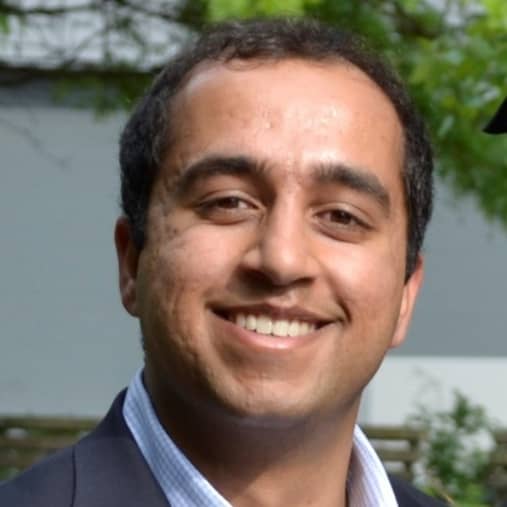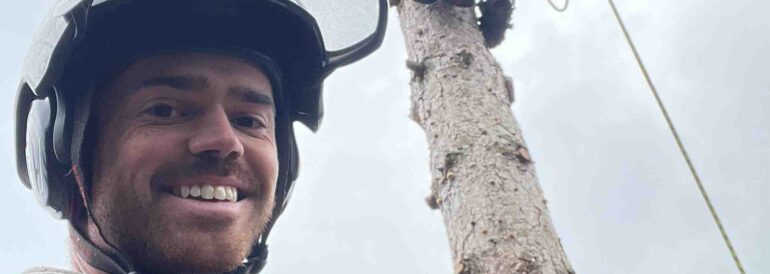The process of hiring somebody to take care of your trees is not only about getting the lowest price, but also getting the right person. It has to do with identifying a professional who is knowledgeable in the areas of the biology of trees, tree safety, and preserving trees over the long term. ISA certification comes in at that point.
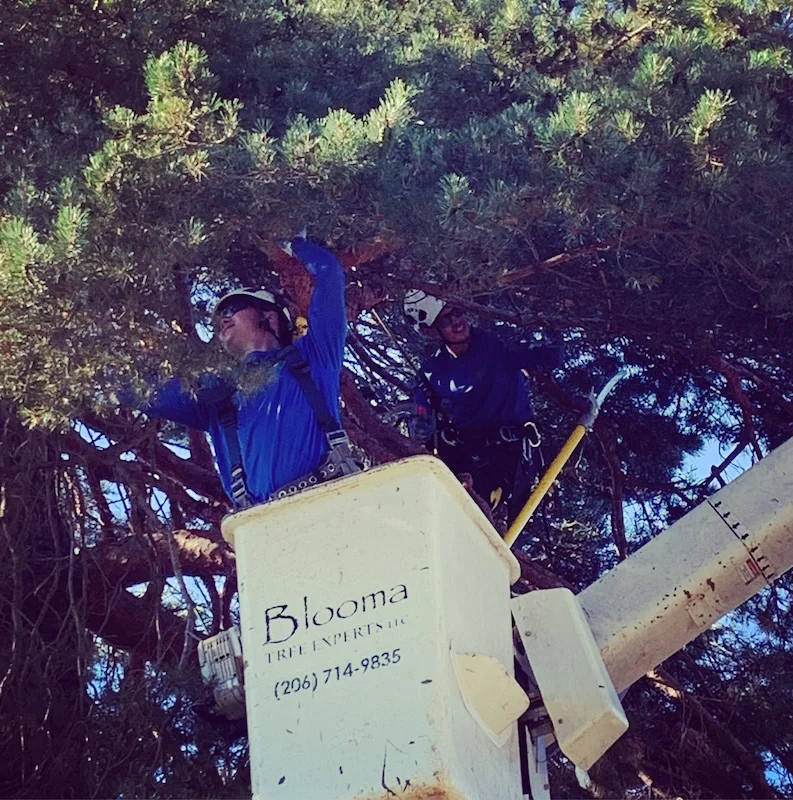
The International Society of Arboriculture (ISA) is the world’s association that qualifies the arborists who are held to high standards of professionalism.
An ISA Certified Arborist is an individual who has successfully passed a 200-question exam and has a minimum of three years of full-time experience or a relevant degree and who has committed to continual learning by re-certifying every three years.
This qualification is well known throughout the world and is an indicator of confirmed skills in tree anatomy, risk management, pruning, disease diagnosis and safe working methods.
This certification is only earned by 30-40 percent of people in the tree care industry, which means that when you hire one, you are hiring separately certified people to make sure they meet the highest standards in the world.
What is ISA Certification?
ISA Certified Arborist is a professional qualification of tree care specialists who show indications of competence, ethical standards and continued learning. Certification is granted to professionals by the International Society of Arboriculture to persons meeting the education or experience qualification, passing the 200-question exam with a minimum score of 76, and by signing the ISA Code of Ethics.
Having an arborist who is more than a saw-man is indicative of a skilled arborist, trained in all the major fields of arboriculture: soil science, pest control, proper rigging and urban forestry, etc.
Quick Overview
What ISA Certification Proves:

- Passed the 200-question examination with a 76 percent pass.
- At least 3 years of full-time arboriculture experience or a related degree
- Educated in 10 areas of knowledge: anatomy, pruning, risk assessment, pests, safety etc.
- Follows the ISA Code of Ethics
- Maintains continuing education every 3 years
- Holds an internationally recognized credential
Why This Matters to You:
- Demonstrates verified competency and professionalism
- Ensures up-to-date knowledge of tree care best practices
- Guarantees proper pruning (not harmful topping)
- Confirms safety training for working near power lines
- Provides accurate tree health diagnosis and treatment
What It Does Not Mean:
- Not a government license (tree work often isn’t regulated)
- Doesn’t guarantee the lowest cost or the most experience locally
- Doesn’t automatically include insurance (verify separately)
The ISA Certification Process – What They Had to Do
ISA certification is not a purchase, it is achieved by studying, practice and dedication. In order to be eligible, the professionals should have 3 or more years of full-time experience in arboriculture work or should possess a degree in a relevant discipline, i.e., arboriculture, forestry, or horticulture.
After eligibility approval (a 5-10 business day process), candidates must pass a 200-question comprehensive exam covering ten areas of tree science and practice. The test lasts around 3.5 hours, has a price of between 170 and 280, and the minimum passing score is 76 percent.
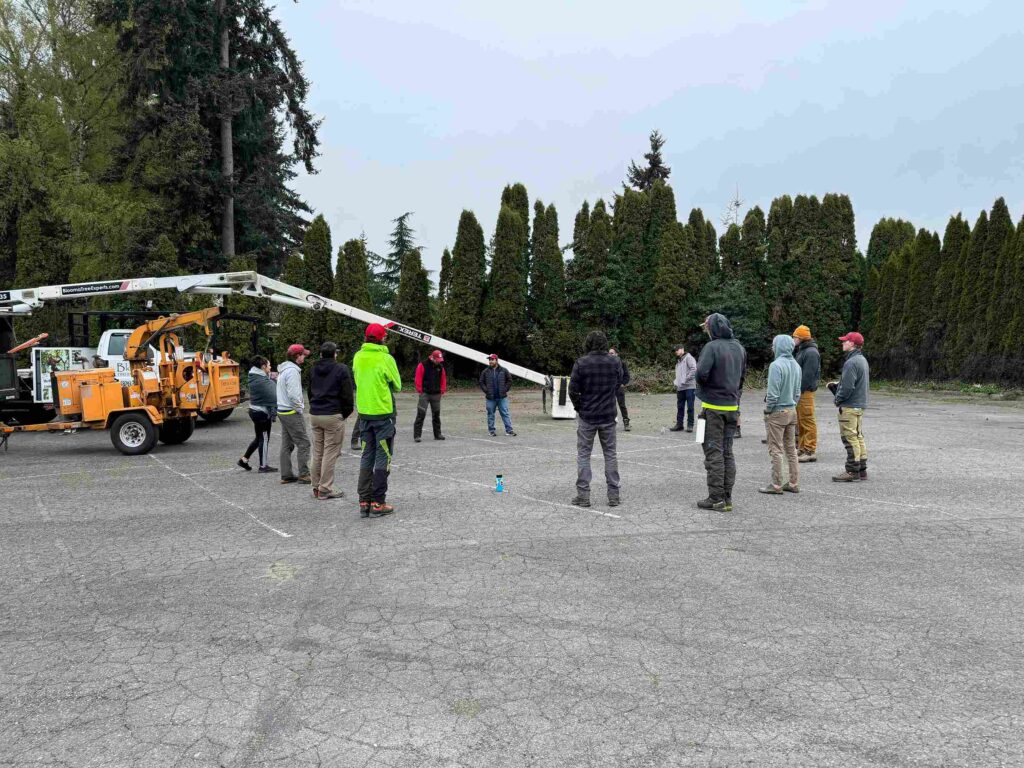
After the certification, arborists must obtain continuing education to keep up with the current status by renewing their certification every three years.
Eligibility Requirements (Must Meet ONE)
Experience Path:
- 3+ years full-time arboriculture work (pruning, cabling, diagnosis, removal, consulting)
- May include supervised volunteer work with documentation
- Equivalent hours accepted if not full-time
Education Path:
- 4-year degree in arboriculture, horticulture, landscape architecture, or forestry = only 1 year of experience needed
- 2-year degree in same fields = 2 years experience needed
- Must be from an accredited institution
Exam Format:
- 200 multiple-choice questions
- 3.5-hour time limit
- 76% passing score
- Covers 10 knowledge domains
- First retake is free, additional retakes cost $75
10 Knowledge Areas Tested:
- Tree Biology (15%) – anatomy, identification, growth processes
- Risk Assessment (15%) – hazard detection and evaluation
- Pruning (15%) – correct techniques, timing, and methods
- Integrated Pest Management (10%) – disease and pest control
- Cabling & Support Systems (8%) – reducing risk from weak branches
- Planting & Establishment (8%) – proper techniques and placement
- Safety & Equipment (10%) – safe climbing, chainsaw use, PPE
- Fertilization & Soil Management – (4%)
- Urban Forestry (7%) – city tree management, environmental benefits
- Professional Practice (8%) – ethics, communication, business standards
Continuing Education
Recertification is required every 3 years. To make 30 or more hours of professional development, arborists need to complete workshops, conferences, or advanced courses.
This keeps certified arborists informed of emerging diseases, effects of climatic conditions and emerging industry best practices.
Certified vs Uncertified Arborists – The Real Difference
All the tree workers are certified and such distinction can make or break your tree. The ISA only certifies 30-40% tree care professionals.
Unqualified employees can be experienced but their knowledge has not been authenticated. They might have the fundamentals of pruning but they do not have the science of maintaining good practice, risk assessment, or diagnosis of pests.
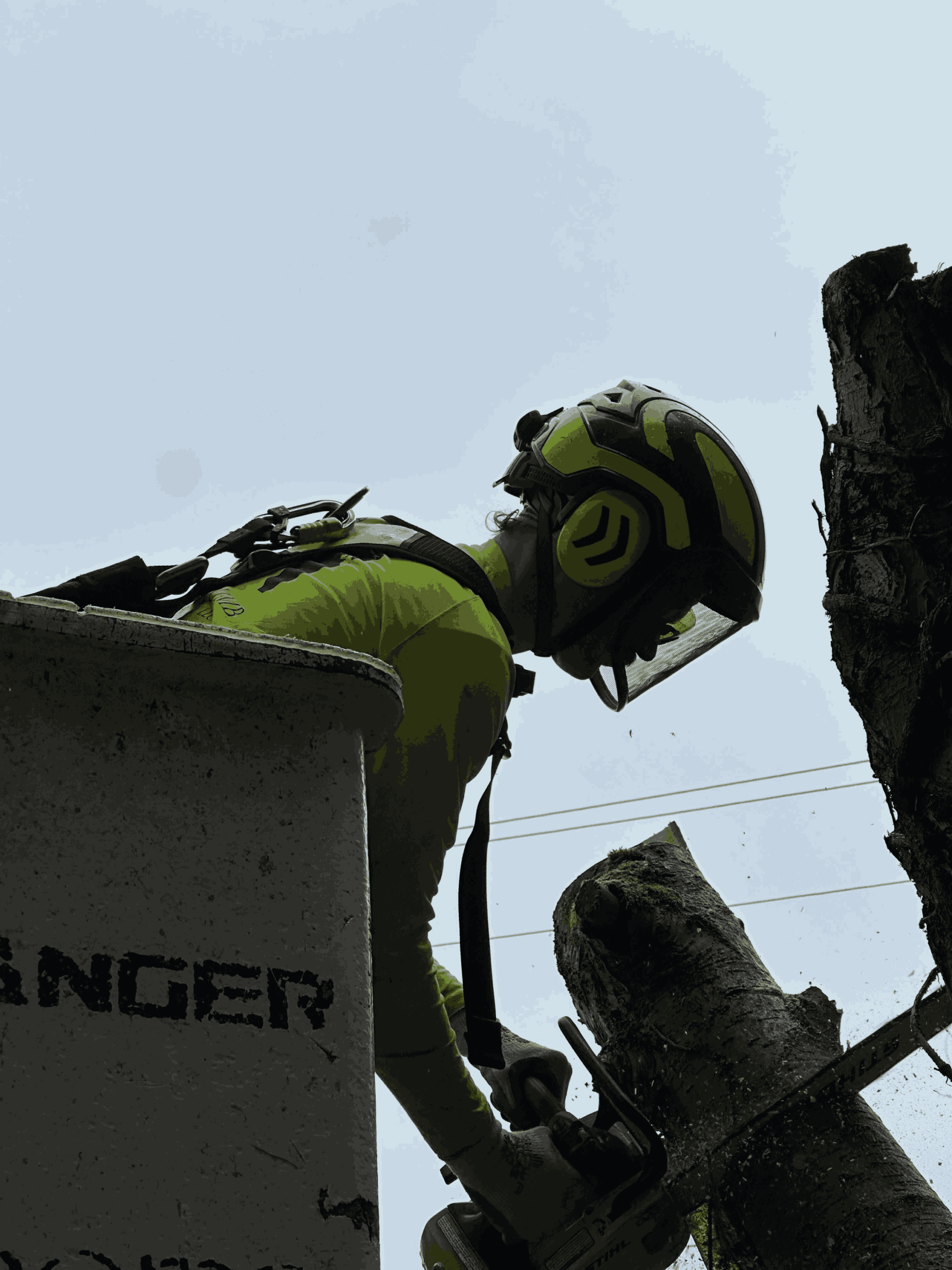
Blooma Tree Certified arborists are prepared to recognize dangerous trees and to operate safe climbing and rigging equipment as well as adhere to moral principles.
What Certified Arborists Know
Disease and Pest Diagnosis
Certified arborists properly diagnose such diseases as oak wilt or Dutch elm and prescribe proper, science-based treatments; they avoid making expensive misdiagnoses, which frequently become unnecessary removals of trees.
Proper Pruning Techniques
They know that it is bad to top trees and they never do so because they know where to prune at the junctions and have to vary in their pruning methods according to the species and season of growth of each individual tree.
Safety Protocols
The same level of safety is followed by the ISA Certified Arborists who use appropriate climbing and rigging equipment, and practice proper safety around the power lines in order to keep the property and people safe at all times.
Risk Assessment
Certified arborists assess the damage caused by storms, locate weak trees and those already rotting and decide on the safest way to ensure that the damages are mitigated by pruning or removal to minimize damages and secure the surrounding buildings.
What Uncertified Workers May Not Know
- May not identify diseases accurately
- Could recommend unnecessary or harmful work
- Might not understand power line safety
- Often still perform topping, a banned practice
- Could lack liability insurance or safety training
The Business Difference
Certified Arborists
The certified arborists will usually cost more, approximately 100-250 dollars per hour because of their higher education, training and broad insurance cover. They are employed in well-established, licensed firms and are highly accountable, as professionals, who follow the standards of the industry.
Uncertified Workers
Unqualified employees tend to offer between $50 and $100 per hour but are either uninsured, unlicensed, or self-educated. They can also be shortcutting corners, operating with old or dangerous practices and can be lacking professional control or unchecked arboricultural experience.
Six ISA Certification Types – More Than Just “Arborist”
ISA certification goes beyond the basic credential. There are six main certifications, each representing a different specialty or level of expertise.

The Six ISA Credentials:
ISA Certified Arborist (Foundation)
- Most common certification
- 200-question exam, valid 3 years
- Covers all areas of arboriculture
ISA Utility Specialist
- Focuses on vegetation near power lines
- 115-question exam
- Requires 2,000+ hours of utility experience
ISA Municipal Specialist
- For managing city or public trees
- 115-question exam
- Requires 3+ additional years managing urban trees
Tree Risk Assessment Qualification (TRAQ)
- Focuses on identifying hazardous trees
- Requires an ANSI course and qualification process
- Commonly used for storm risk assessment
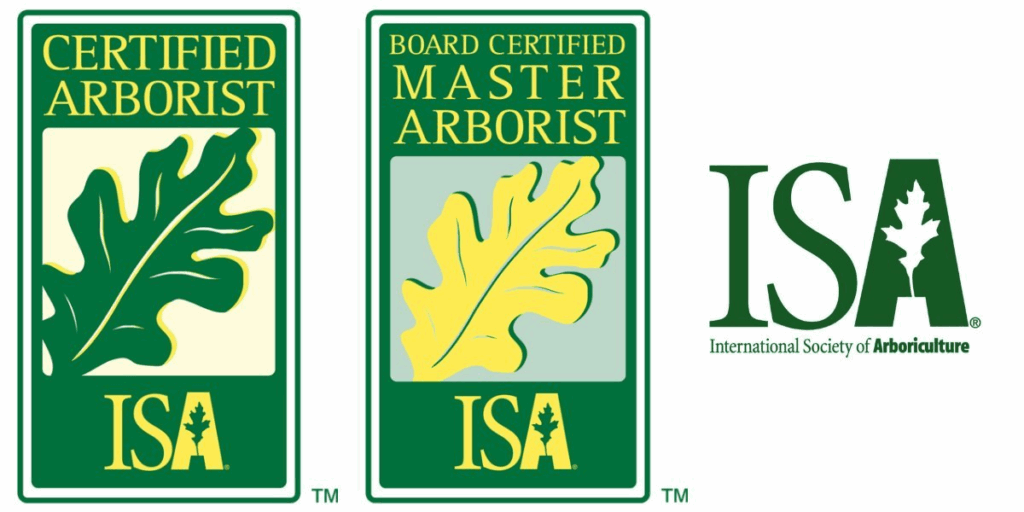
Master Arborist
- Highest credential; 200-question exam
- Requires years of advanced experience
- Held by a small percentage of professionals
Certified Tree Climber
- Combines written (65 questions) and field test
- Demonstrates technical climbing safety and endurance
How to Verify ISA Certification
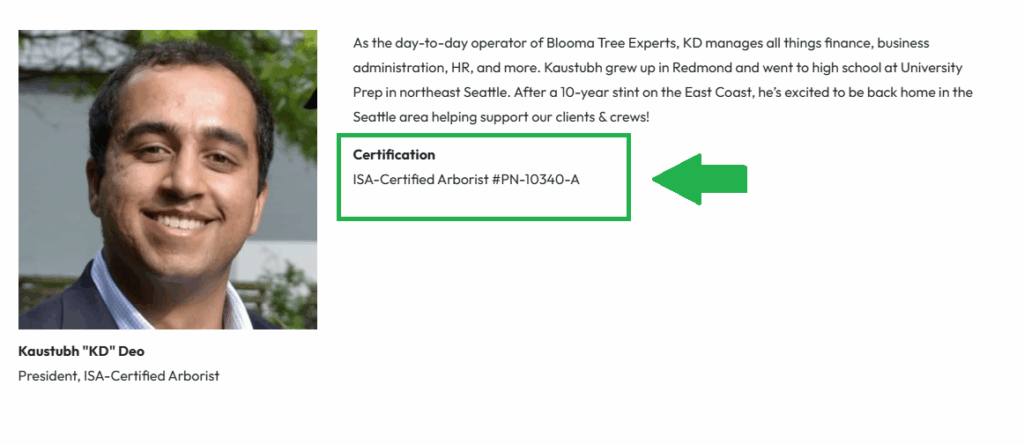
You can easily verify an arborist’s certification yourself and you absolutely should. Always ask for their certification number and verify it on the official ISA website.
Step-by-Step Verification
Step 1: Ask for Certification Number
Every certified arborist has a unique number. Hesitation or inability to provide it is a red flag.
Step 2: Check Official Directory
Visit www.treesaregood.org, and use the “Find an Arborist” tool. You may do a name search, a number search and a location search.

Step 3: Verify Currency
Make sure that the certification is active. Out-of-date or lapsed credentials imply that they are not certified anymore.
Step 4: Confirm Standing
Good standing status implies that the arborist fulfills the continuing education and ethical requirements.
Step 5: Request Documentation
Request a copy of the certification and proof of liability insurance with a minimum coverage of $1 million and workers’ compensation coverage.
Additional Verifications
Insurance Verification
Insist on the Certificate of Insurance provided by the arborist, check the coverage by calling the insurance company directly and ensure that they have an active, current and sufficiently adequate workers’ compensation policy to do the type of work on the tree that is being undertaken safely.
Licensing Verification
Although this is not a law, in some places, like Broward County, FL, you must have a Class A Tree Trimmer License. Additionally, ensure that the business license of the arborist is valid, up-to-date and registered with the local authorities so that the arborist is operating within the law.
Background Check
Check the reviews of Google and Better Business Bureau (BBB) attentively, demand a minimum of three referrals, and personally go to the past customers and discuss the reliability, professionalism, safety history, and overall satisfaction of the work performed by the arborist.
Why ISA Certification Matters to You
The employment of an arborist of the ISA level safeguards your trees, property and wallet. Certified professionals understand how to prevent the mishaps that are likely to occur like topping or overpruning which can destroy a tree permanently. They are also insured and have high safety standards and hence the liability risk is mitigated.
Certified arborists normally cost 20-50 more than that however they end up saving homeowners thousands of dollars in the long term by avoiding improper diagnosis, unwarranted removals and property damage.
Direct Customer Benefits
Benefit 1: Prevents Harmful Practices
Certified arborists do not do any topping and employ appropriate pruning techniques at the appropriate time, and this keeps the structure, stability and the natural form of growth of your trees safe in the long term.
Benefit 2: Accurate Problem Diagnosis
They precisely determine the real causes of tree decline, be it pests, soil imbalance, and disease, and offer science-based methods of treatment that do not incur unnecessary expenditures and those that are ineffective.
Benefit 3: Safety Expertise
Certified arborists operate safely around power lines, are trained and climbers use safe methods and are fully insured so as not to damage your property or their labor force.
Benefit 4: Long-Term Tree Health
Their labor would lead to healthy growth and sustainability, less risk of storms, and they would increase the lifespan of your trees by 10-20 years so they are not damaged or lost assets.
Benefit 5: Peace of Mind
Having proven qualifications, insurance, and compliance with the ISA Code of Ethics, certified arborists offer professional responsibility and complete trust in the quality of their work.
Red Flags When Hiring – What NOT to Do
The damage can be permanent due to the unqualified or unprofessional tree workers. Do not deal with someone who will not be able to confirm his/her certification or offer dangerous methods.
10 Red Flags
- Can’t verify ISA certification – number doesn’t check out or is expired.
- Suggests tree topping – any mention means immediate disqualification.
- No insurance documentation – liability risk to you.
- Vague work description – no written scope or specifics.
- Cash-only payment often indicates a lack of insurance or tax compliance.
- High-pressure tactics – rushing you to commit without comparison.
- Suspiciously low bids – 50%+ below market value usually indicate poor quality.
- No references or online presence, indicating a lack of verifiable history.
- False credential claims – can’t prove ISA membership or certification.
- No written estimate – verbal quotes only; no accountability.
FAQs – Quick Answers
Q: What does ISA Certified Arborist mean?
A: Certificate by the International Society of Arboriculture showing that the arborist has successfully completed a 200-question exam, has 3+ years of experience or a degree, adheres to the Code of Ethics and is continuing education at least once every 3 years.
Q: Does the law require ISA certification?
A: No, but it’s the global standard for professional tree care excellence.
Q: How much does ISA certification cost?
A: between 170-280 for the exam, and 100-150 yearly membership.
Q: How do I verify certification?
A: Use www.treesaregood.org or www.isa-arbor.com, type in the name or number of the arborist and ensure that you are an active one.
Q: Why do certified arborists charge more?
A: They spend money on certification, lifelong learning, and have complete insurance coverage.
Q: What questions should I ask before hiring?
A: Ask about certification, insurance, written scope, references, and whether they ever top trees (correct answer: never).
Q: How often does certification expire?
A: Every 3 years. The renewal needs documented continuing education.
Q: Are all certified arborists the same?
A: No. Others have high qualifications like Master Arborist or Utility Specialist according to their level of knowledge.
Summary
By employing an ISA Certified Arborist, you have the benefit of having a professional who has demonstrated knowledge, confirmed ethics and is in an ongoing training program. They are also required to have a minimum of 3 years of experience, a 200-question exam and have to undergo renewal every 3 years so that these professionals are always in touch with the newest scientific and safety practices.
Certified arborists are more expensive in the short term but are going to produce superior results: a safer work environment, healthier trees, fewer errors, and property value. In the case of any particular hospital, make sure the credentials are verified, that the insurance is confirmed and that one does not deal with an individual who cannot present credentials or certification.
You are not just paying someone to do work with trees but you are paying someone to ensure that your landscape is healthy, beautiful, and long-lived.
